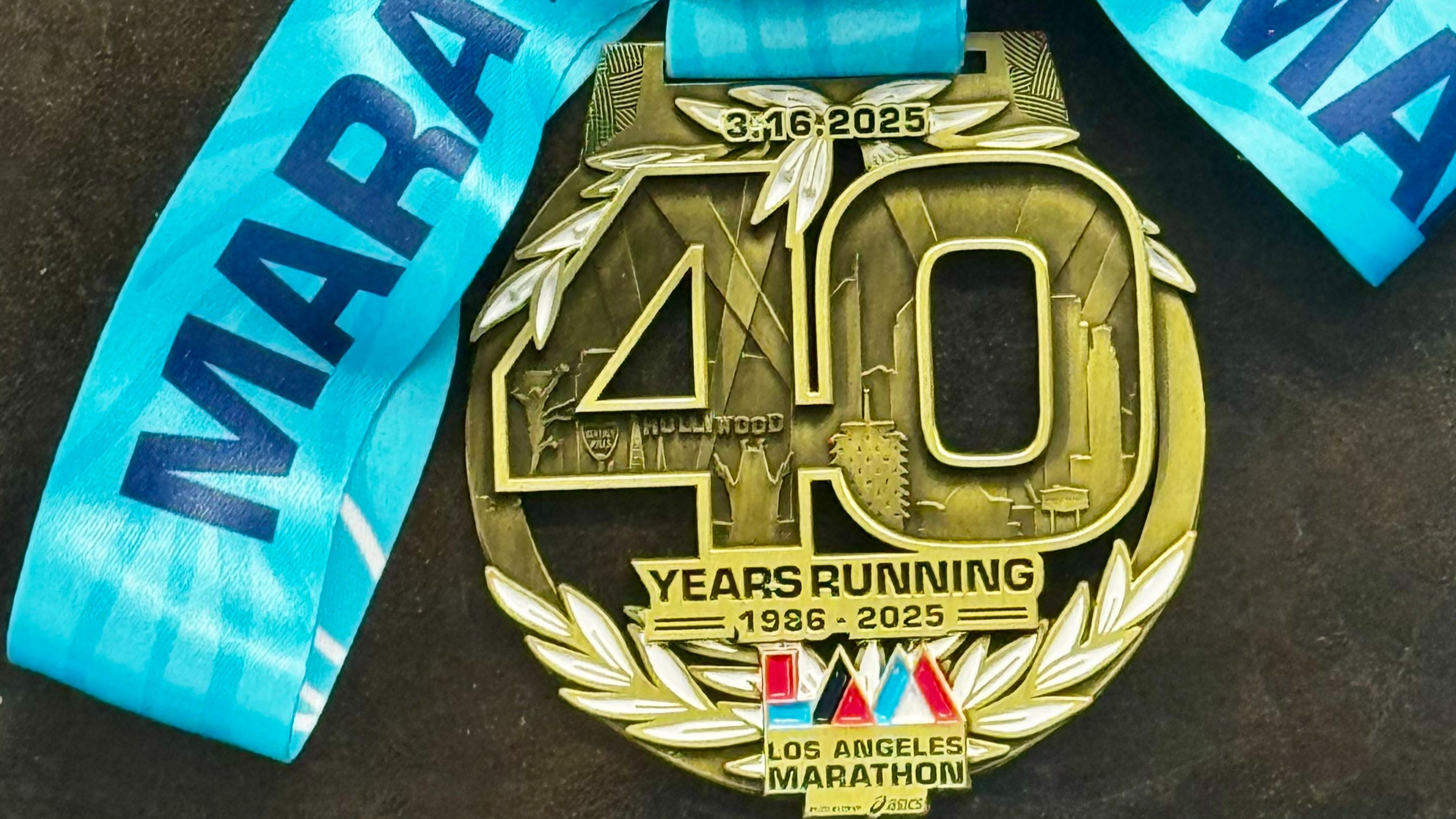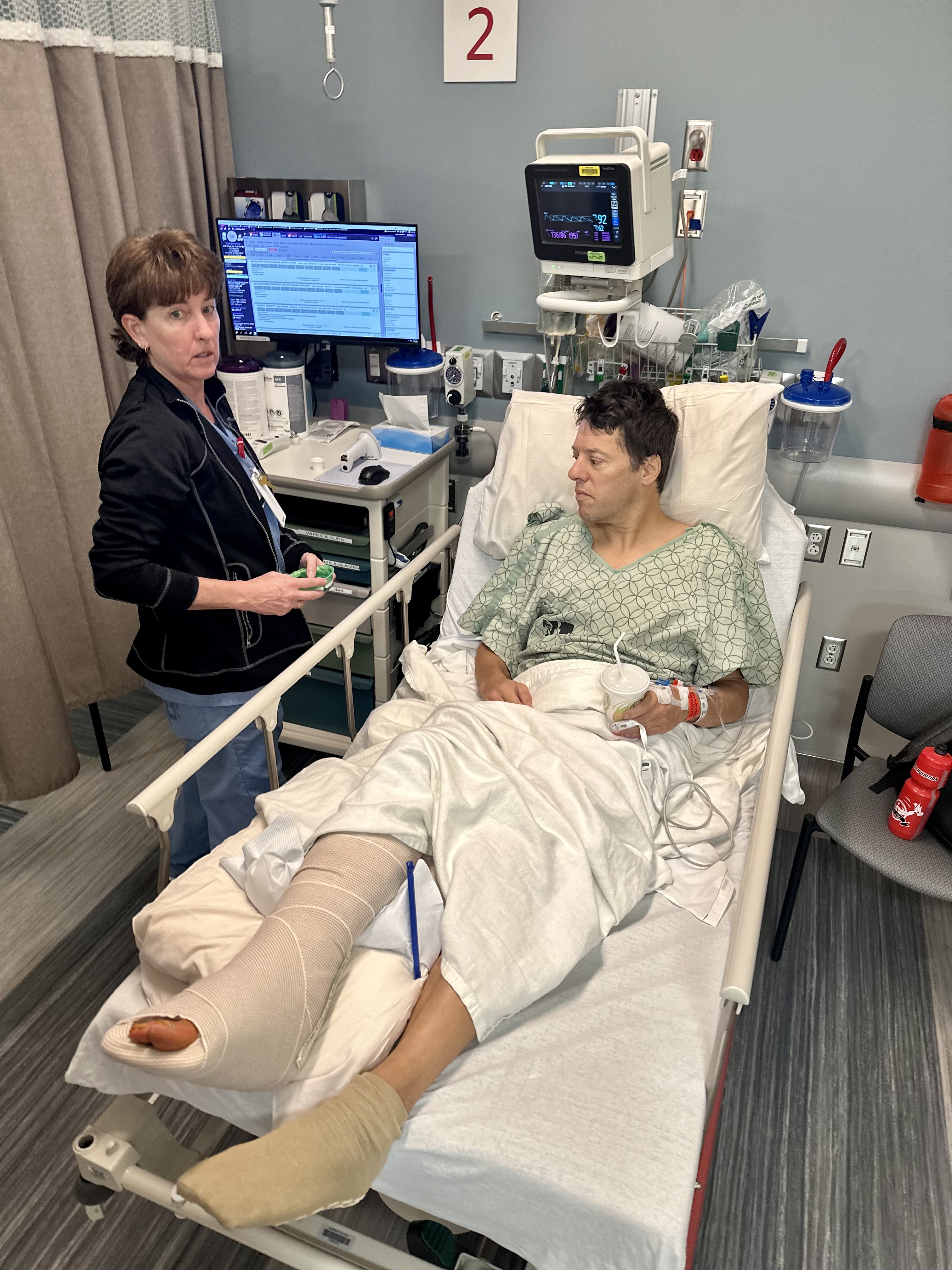
Two Steps Forward and One Step Back Is Still a Step Forward
Mar 31, 2025My doctor told me that recovering from Achilles tendon surgery and returning to running would be a two-step forward, one-step-back experience. Conceptually, I understood what he was saying, but I was ill-prepared for the reality.
Progress, like an elevation profile of a long race, often looks flat and pretty forward. But, like anything viewed from a distance, it seems different than when faced up close. After my surgery, I set a goal to return to the marathon and plotted a path that predicted a return in a year and a half to two years. In my mind, it was linear: surgery, physical therapy, weight-bearing, walking, swimming, riding my bike, and then running.
My naivety was cute.
Still, like many grand ambitions, attempting something big takes a certain level of naivety. Many of us signed up for our first marathon, not fully understanding what we’d committed to; if we had known, we’d never have signed up in the first place. I’d never had surgery, and despite extensive knowledge, I’d never personally faced this challenge. Waking up from surgery was the first reality check; it sucked. I couldn’t sit up; I was dizzy, sick, and looking at the massive bandaged leg, demoralized.
This reality check forced me to acknowledge, for the first time, that the road I faced might have a few more hills than anticipated. I had prepared myself for the physical challenges, but the psychological and emotional part? Not even close.
I wasn’t prepared for dependency.
I was dependent on someone for just about everything: driving, cooking, carrying food, making coffee (let’s not understate this one), and putting on my one shoe. Let’s not forget being wheeled through the airport by my 13-year-old stepdaughter; my luggage wasn’t the only thing checked; my ego was too.
Asking for help is not one of my strong suits; I was humbled.
The physical setbacks—the ones I thought I had prepared for—started quickly. My aggressive return to activity strategy was met promptly by the toll surgery took. My first day trying to use the arm cycle was met with a wave of nausea and dizziness. Beyond the dizziness, I was exhausted.
The rolling road continued; there were significant hurdles to overcome, searing nerve pain, and a reset to ground level zero after an early physical therapy session. Periods of hope were quickly and frequently dashed when my range of motion refused to improve. My timeline for returning to running vacillated between a few months and nearly a year.
Despite the roller coaster, I was still moving forward. Even on the days when the destination felt a million miles away, a simple look back reaffirmed that progress was indeed being made.
Not much changed after a single workout, or two, or a dozen, but six months after surgery, I laced up my running shoes and took my first steps on a cinder-lined track.
That first run, just a single minute, wasn’t the end of the journey; it was the beginning. One minute turned into two, and two turned into miles.

My doctor warned me that recovery would be two steps forward, one step back. Those words rang through my head and kept me grounded each time I faced a difficult moment and had to step back. I reminded myself of where I’d come from and that two steps forward and one step back was still a step forward.
When in doubt, I remembered his words.
That’s the message.
The journey, whether back from a debilitating injury or on the way to qualifying for the Boston Marathon, is a windy, twisty road filled with ups, downs, detours, and backtracks. That’s life. But in that journey, and through those processes, we learn and grow.
Finishing the LA Marathon 17 months after surgery was the cherry on top of a long and ongoing love affair with running.
Getting to the finish mattered in many ways more than other finish lines, but the outcome was less important than learning to trust the process and return me to the sport that shaped my life.


